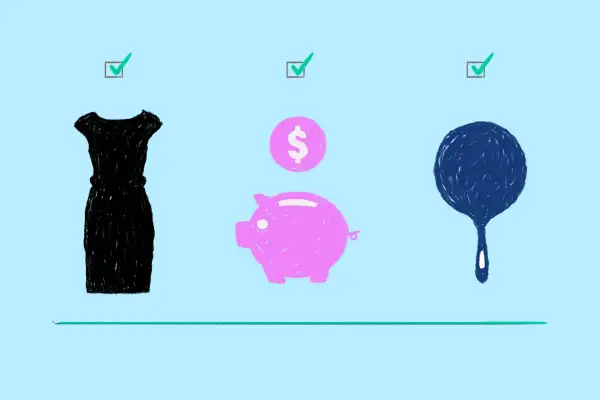4 Smart Money Moves I Made When I Got My First 'Real' Job — and How They're Already Paying Off

Last spring, I got my first-ever “big girl” job.
It was a relief — I’d spent almost an entire year using my brand new journalism degree to wait tables, and I was on the verge of going broke.
But earning a regular bi-weekly paycheck has its complications. When I was working in restaurants, the wad of cash I took home after every shift fluctuated from one day to the next. My money mindset was more “How do I pay for groceries tomorrow?” rather than “how do I allocate this for the entire month?” It was stressful, but it was simple.
I knew I needed to get smart about my shiny new salary, so I set out to make major changes to my spending habits, and for the first time, invest in my future. And since I work for Money.com, I’m uniquely positioned to get schooled about my financial health on the regular.
My bank account still isn’t in perfect shape (hello student loans), but there are a few concrete steps I’ve taken in the past year that have changed my finances for the better.
From a crock pot to a personal investment account, here are four “first job” investments that are already paying off.
A solid “statement” outfit
Despite what you might imagine the dress code of a financial news publication to be, our office is pretty lax. Think business-casual; heavy on the casual.
But after a few months of working, I realized there were a few scenarios where my usual sweater-jean-legging rotation wouldn’t cut it. On important days in the office—days where I had to network, or take part in an important meeting—I had nothing all that impressive to wear. My “formal” clothes were all a little too, uh, collegiate.
I also realized that, with my new work schedule, half of the clothes in my closet were no longer getting worn.
By selling and donating clothes that only served one purpose (or in many cases, no purpose), I made space for items that were of better quality, more timeless, and more versatile.
Best of all, I made about $120 from selling clothes second-hand — more than enough to buy a formal black dress I’m not embarrassed to network in.
Something For a Rainy Day
Shortly after starting my new gig, I learned about the importance of emergency funds.
I also learned that instead of putting money into a typical savings account—which has an average 0.09% interest rate—I should opt for a high yield savings account like SFGI Direct or Ally, which have 1.9% and 1.6% interest rates, respectively (I went with Ally since it was named Money’s Best Online Bank two years in a row).
Next I had to figure out how, exactly, to fill that fund. The rule of thumb you've probably heard before is that you should put away 10% of each paycheck until you build up to 3-6 months’ worth of living expenses. But having never been an expert saver, I decided to start with what I knew I could afford and work my way up. I started by automatically depositing 5% with a goal of reaching 10% by my one-year work anniversary.
As I became better at managing my money, and had more and more left over at the end of each month, I’d up the amount I was transferring to my emergency fund by a single percentage point. Now two months shy of my work anniversary, I’m already up to 10%.
High Quality Cookware
Since I had literally zero savings when I started this job, it should come as no surprise that I used to blow major portions of my paycheck on food delivery apps like Postmates (millennials, amirite?). I realized very quickly that in order to build up that emergency fund, I needed to be a better home chef.
Let’s get real, I’m never going to be the next Barefoot Contessa, so I didn’t feel the need to invest in any ultra-luxurious Le Creuset cookware (although it is absolutely a "maybe someday" fantasy). But I DID find some durable, high quality kitchenware—a crock pot, a CuisinArt food processor, and the Lodge-brand equivalent of a Le Creuset dutch oven I’ve had my eye on—that have been essential to getting comfortable cooking and meal-prepping at home.
I still use Postmates a couple times a month, but I’ve halved my monthly dining out spending. And I actually know how to cook now. Kind of.
Personal Investment Portfolio
Knowing the ins and outs of the stock market isn’t part of my job description (thank god) but I do know that putting a small portion of my paycheck into my 401(k) each month isn’t going to cut it if I want to have a nice retirement, a house, and kids (gulp).
Once you’ve put in enough to get your employer's match, investing on your own is one common next step to increasing your wealth. So I opened a Roth IRA and a personal investment portfolio through an online investment management service. Right now, I'm putting $25 into both each month, and plan on putting any earnings into my future dream home.
If I were saving to buy a house a few years from now, it wouldn’t be wise to put this money towards investments, as there’s not enough time to actually ‘grow’ it. But since I have a long road ahead of me, and I’m already starting to see results from the “investments” I made over the last year, this is a gift to my future self.
